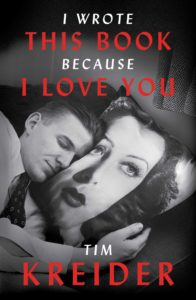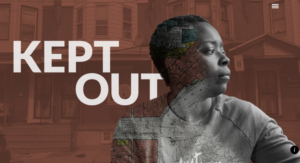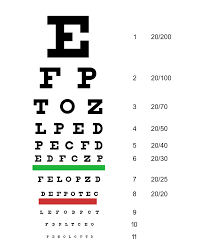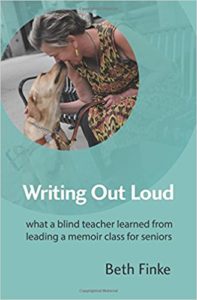If you could have a guarantee that one specific person would read your memoir
March 1, 2018 • 6 Comments • Posted in careers/jobs for people who are blind, memoir writing, radio, teaching memoir, writing, writing promptsI tuned into Fresh Air Monday right in the middle of an interview with a guy they said was a cartoonist well-known for his series, “The Pain — When Will It End?” Host Dave Davies was asking the guy questions. Where did his impulse to express himself this way come from, what was his process for drawing himself into the cartoons, blah, blah, blah.
Except it wasn’t blah, blah, blah. The cartoonist was smart. Self confident, but not haughty. He never interrupted the interviewer. His answers were thoughtful. His voice sounded kind. Who was this guy? I stayed tuned to find out, and when it was time for a break, and when they said, “Our guest is cartoonist and essayist Tim Kreider” I was flummoxed.
Essayist? I thought he was just a cartoonist.
And did they say Tim Kreider? Isn’t that Kathy’s boyfriend? I kept listening.
The rest of the story? The Kathy I am referring to here is 84-year-old Katherine Zartman, a writer in one of the memoir classes I lead in Chicago. Three years ago I had my writers pen 500-word essays answering this question: If you could have a guarantee that one specific person would read your memoir, who would you want that person to be?” Explain why it’d be that particular person, I said. “What do you want to say to them?”
Three days after I gave that assignment, Kathy Zartman read an Opinion Essay by Tim Kreider called The Summer that Never Was in the Sunday New York Times. She found that parts of it expressed much the same sentiments, sometimes in almost the same words, as her pieces do. “I flirted with the cockeyed idea of sending Mr. Kreider a note about our common world-view.”
As she read more pieces by “Mr. Kreider,” Kathy’s sense of kinship deepened. The essay she read out loud in class the next week explained why, if she could guarantee one person would read her memoir, it would be Tim Kreider. “His take on his mother’s move into a retirement community, his analysis of the only hope for curbing gun violence, and his feelings when he kills, or does not kill, household ants — on all these topics he expressed, far better than I ever could, exactly how I feel.”
After some online stalking, our octogenarian sleuth discovered that if you send a letter to Tim Kreider’s Maryland P.O. box via U.S. Mail, he will (eventually) answer that letter. ”So I was presumptuous enough to send that essay to him.”
And just as promised, Tim Kreider eventually did send a handwritten note back. “I work hard to make sure my essays are universal,” he wrote, thanking Kathy for her note. “It’s good to know they resonate with people who are on the surface very different from me.” Mr. Kreider’s note went on from there, and he ended it with a friendly, “Tim”.
Kathy was so thrilled that she mailed him her self-published collection of essays, Life’s River Flowing, along with a note letting him know she had developed Parkinsonism, and the syndrome was making writing a bit more difficult for her.
And guess what? The very person Kathy Zartman wanted to guarantee would read her memoir? He actually did.
Kathy and Jim Zartman’s four children grew up in the 70s, and in a letter back to Kathy, Tim explained that he was a kid in the 70s, too. “So your recollection of family life in the era were especially interesting,” he wrote, letting Kathy know he’d passed her memoir on to his mother. “I think you and my mother would get along — I just helped her put together a similar collection of her own memories and reflections, which she plans to self-publish,” he wrote. “As it happens she’s been living with Parkinson’s for several years, and writes about it with equanimity and humor. She told me to tell you the best advice she ever got was…FIGHT it.”
Kathy Zartman is ffighting Parkinson’s Disease quite literally — she regularly attends Rock Steady, a boxing-inspired exercise class here in Chicago. Mildred Sherk Kreider’s self-published memoir, Songs in Diminishment came out in October last year. Kathy has a copy, of course. She turns to it for understanding and encouragement, especially now as she and her husband Jim prepare to move into a retirement community. As for Tim Kreider? He was doing that Fresh Air interview to promote his new book, a collection of essays called I Wrote This Book Because I Love You.


 A piece in today’s New York Times caught my eye.
A piece in today’s New York Times caught my eye. 
